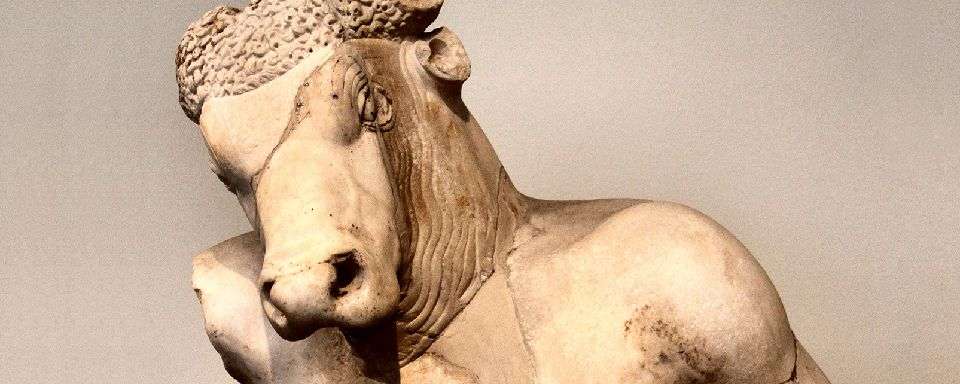Archaeological Museum of Patras: Mosaic Art Muse

When most sightseers think of exploring Greece, Athens and Santorini are the first sites that come to mind. While both are equally sublime, I think a journey through the art and history of Patras is far better.
Due to its distant location, the museum of Patras is not as popular with travelers and art historians as other museums in Athens. I recently road-tripped around the northern Peloponnese, to explore one of the regional capital of Western Greece: Patras. This beautiful city is full of archaeological sites and huge Roman Theaters and not to forget the lust and wonder of the Roman Mosaics in its Museum. Breathtaking to walk around at your own tempo, you’ll be stopping at each mosaic mural for one incredible human fascination and make history come alive again.
Today’s article is a short brief stop at the breathtaking Archaeological Museum Of Patras, maintaining a sense of curiosity and empathy, so you’d still want to go and explore it yourself!

Archaeological Museum of Patras:

The new archaeological museum of Patras at the city’s northern entrance is housed in a new purpose-built building designed by the architect Theophanis Bobotis. Covering a total surface of 5,955 m2 with 3 huge halls: “The Permanent Exhibition”, “The Temporary Exhibition Hall”, and the modern reception with a visitor service area. You can also stumble upon a small amphitheater, a coffee shop, lectures hall, antiquities’ storage rooms and a spacious surrounding area, including the visitors’ car park.

The permanent exhibition was organized by a Scientific Committee of the Hellenic Ministry of Culture and Tourism, with financial support by the 3rd Community Support Framework under the Finance Management Fund for Archaeological Projects. The museum’s exhibits cover the time period between 3000 B.C. and the 4th cent. A.D. and come from the city of Patras, as well as the areas of southern and Western Achaea. The exhibition is divided into three large thematic units, i.e. Private Life, Public Life and the Cemeteries respectively/ The most prominent among the artifacts in all units are ones dating to the Roman period, during which Patras reached its apogee. Patras was established as a colony by Octavian Augustus in 14 B.C. and played a significant role in the history of the Roman Empire, reaching the peak of its affluence during the 2nd cent. A.D.
Public Life
The Public Life unit covers the time period between 1500 B.C. and the 4th cent A.D. The unit begins with maps of the Roman territories which support the documentation on Patras’ monumental topography.
After that one comes to a series of exhibitions, mainly of the Roman period, relating to the technical infrastructures, the commercial activities, the social and administrative organization, the people’s cults and entertainment. Some of the city’s major sites, such as the Odeon, the Stadium, the Roman bridge , the Aqueduct, the Baths etc, are also photographically illustrated. The most interesting collections in this unit are the Roman mosaic floors with multicolored marble inlaid decoration and mosaics from two large buildings, as well as part of an urban paved road with its roadside colonnade.
Worth noting, too, is a Mycenaean warrior official’s assemblage from Portes, Achaea, like the assemblage of weapons from various Mycenaean sites in the region of Patras that reflect no only the martial power during the prehistoric period, but also the existence of a stratified military hierarchy. Religion and entertainment are represented by the excellent mosaics of Neilos of Cyclopes and the musical-athletic competitions, by a series of statues dedicated to the gods worshiped in Patras, as well as by funds with depictions of gladiators’ scenes.

The most imperative in this hall is the excellent statue of Athena Parthenos. a Roman replica copying the chryselephantine ( Gold and Ivory ) statue of the goddess, a famous work of Pheidias in the Parthenon.

Private Life
The Private Life unit comprises works related to the everyday life of Patras’s citizens as well as of other towns and villages in Western Achaea, from the prehistoric period to the late Roman Times ( 3000 B.C. – 4th cent. A.D. )
Among the wealth and variety of the museum’s collection, the most noteworthy are the Mycenaean pottery, the reconstruction of typical parts of urban and rural houses, a Roman private bath, Roman statues, as well as artefacts related to the everyday life of the people.

Nevertheless the most outstanding among them are the mosaic art of the city’s houses, lavishly by a variety of geometrical and figurative motives. While the most impressive mosaics are those depicting the hunt for the Caledonian boar, a reflection of the myth of Milagros and Atlantes, the dance of three women around an open-air altar, a four-horse chariot with its charioteer, Triton riding a seahorse, Aphrodite holding a mirror, Medusa’s head, a hunting scene in a forest, a wine press installation, where Pan and his companions carry and press the grapes and a fishing scene with cupids and views of the marine life.

Mosaic Art Muse
The archaeological legacy of Patras Archeological museum is home to some of the world’s most priceless mosaic art. Designed to preserve the archaeological treasures of Patras!

Got inspired by reading this article?
You May Also Want To Read: Mosaic Installation Capturing Radiant Light Color
Don’t Forget to Subscribe to our Newsletter for Weekly Updates on Mosaic Art, Decor, Creativity and Much More!










